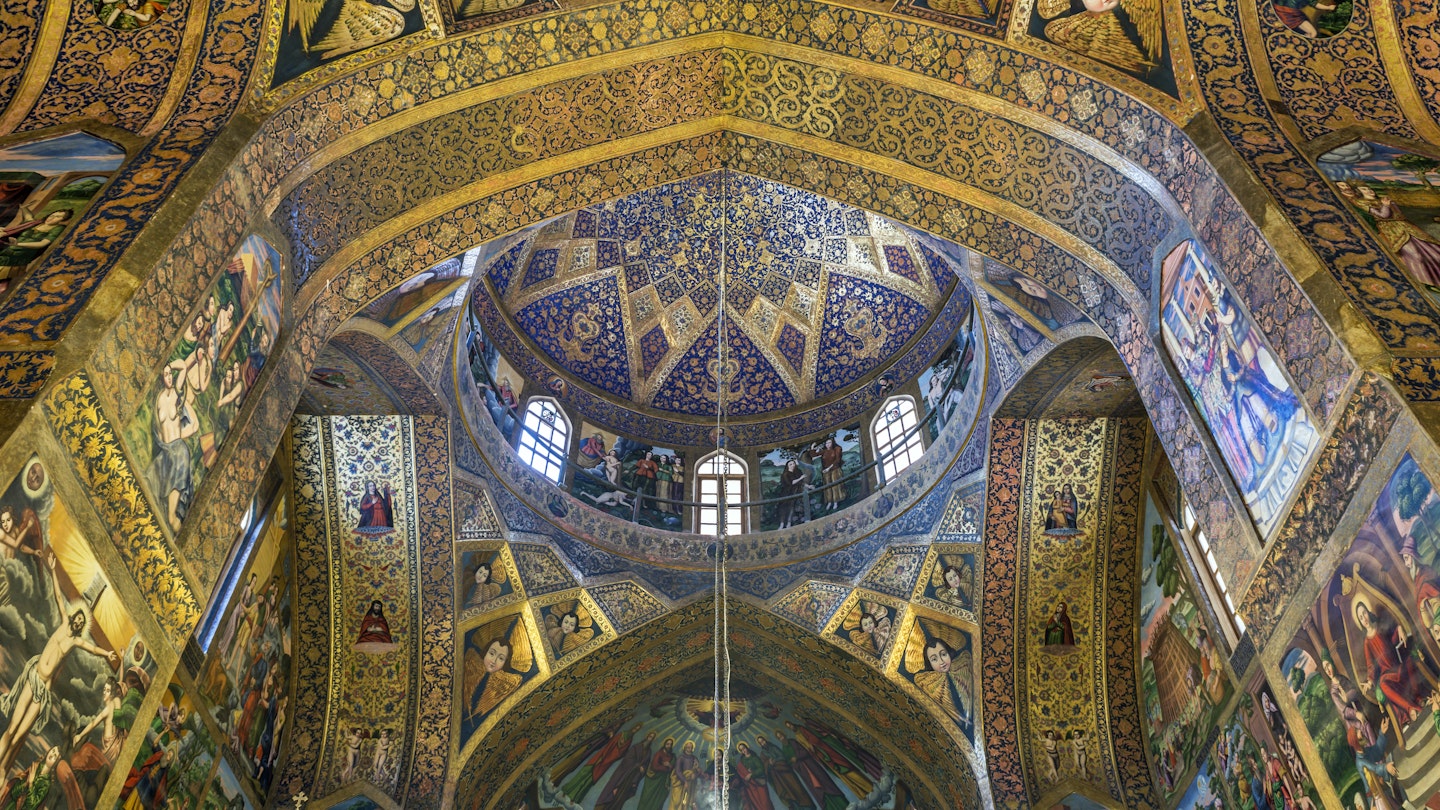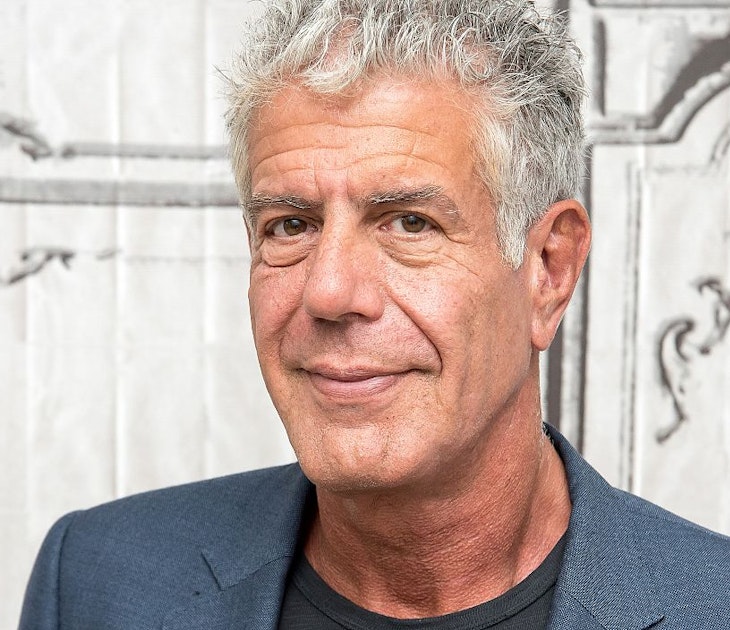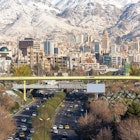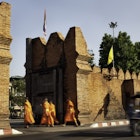Despite its rich history stretching back thousands of years, Iran still lies off the beaten track for most travellers. The joy of travelling in one of the friendliest nations on the planet is the feeling of its yet-to-be-discovered uniqueness.
Although tourism here is slowly building, for now you may find you have many of Iran’s great wonders all to yourself. Here are a few places to visit before the secret is out.

Contemplate opulent Armenian art
It’s hard to tire of the tiled magnificence of Iran’s mosques. Just when you think there couldn’t possibly be yet another striking shade of blue, Iran’s talented artists come up with the goods. Without doubt, visiting the country’s mosques is one of the most alluring aspects for most travellers, but many forget that other cultures have flourished in this region and brought with them equally beautiful artistry. For some contrast and a lesson in how differing cultural styles can merge beautifully, the Vank Cathedral set within Esfahan’s Armenian quarter is a sumptuous alternative. Although the exterior may not seem too noteworthy, within is a golden world of colourful Persian tiles juxtaposed with Christian iconography. The sometimes gruesome frescos shine vibrantly under the subdued light of hanging chandeliers, and it’s hard not to be affected by the history that created this masterpiece.
Gallery crawl through Tehran’s arty side
Behind the congested streets and concrete facade of Tehran is a contemporary art scene pushing against the conservatism of much of the rest of the country. As Iran’s most liberal city, artistic expression is alive and well, and amongst the artist enclaves, you could be forgiven in thinking you were in London’s Soho or New York City’s East Village. Iranian Artists' House oozes hipster cool, with eight gallery spaces across two levels exhibiting everything from sculpture to painting, installations to multi media. The Tehran Museum of Contemporary Art, housed in one of Tehran’s modernist buildings, has a collection that has caused controversy and heated debate, as the government and clerics argue over art’s moral influence on the community. It has an impressive collection of modernist artists, including works by Jackson Pollock, van Gogh and Matisse.
Outside of the galleries, storeys-high street art is starting to appear throughout Tehran’s centre. Provocative anti-American graffiti still lines the walls of the long-shuttered US embassy (now open as a museum called the US Den of Espionage), and it’s a surreal and eye-opening experience, though not to everyone’s taste.
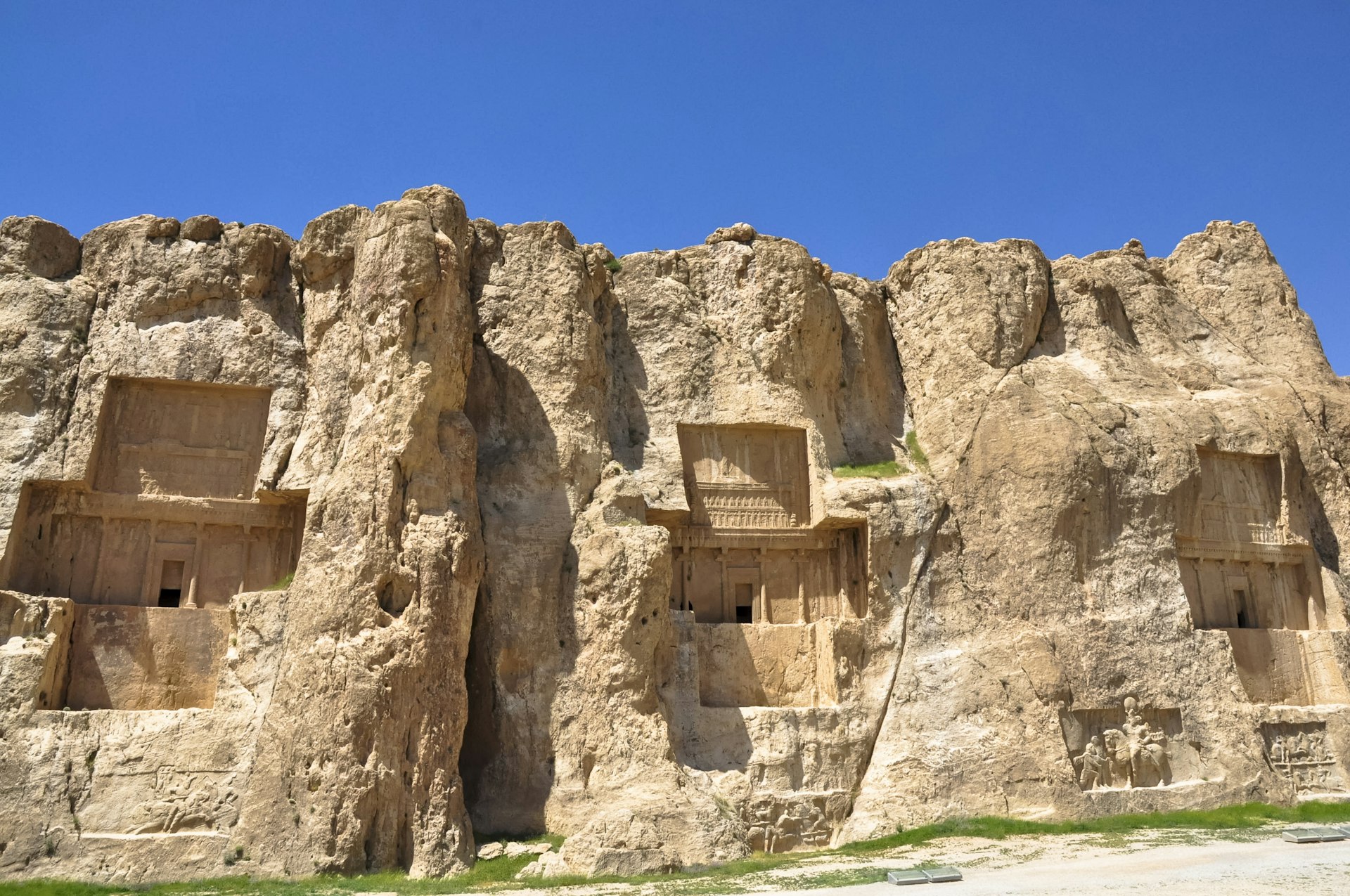
Discover rock-carved tombs of ancient Persian kings
Persepolis tops travellers’ Iran itineraries, and for good reason, but the lesser known Naqsh-e Rostam rock tombs are just as impressive in their own gargantuan right. Only a short distance from Persepolis but surprisingly lacking tour buses, the four royal tombs sit mightily high up rock cliffs with well-preserved reliefs carved into the stone at their base. Sassanian kings march across the rock on horseback showing their strength and engaging candidly with the gods. The feat of chiseling and sculpting these tombs is as astonishing as anything at the site of Persepolis. How the kings were entombed in their sarcophagi high above the ground is still a mystery, with only one tomb displaying a formal inscription, that of Darius the Great, the father of Persepolis’ design and grandeur.
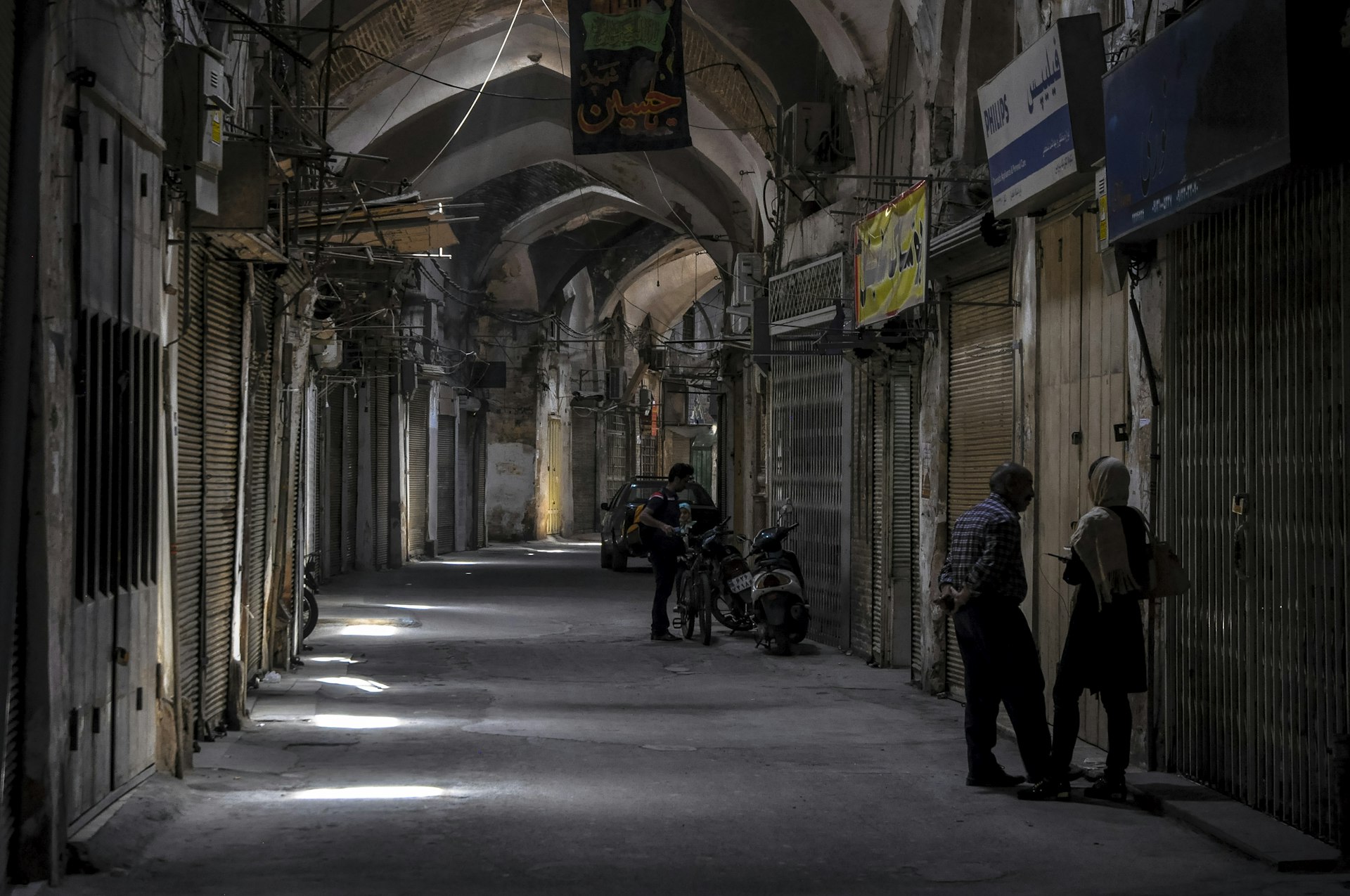
Walk the closed bazaars of Esfahan
The vast labyrinth of Esfahan’s historic Bazar-e Bozorg is brimming with colourful chaos and will lure even the most resistant of shoppers. There are fabulous handicrafts to be had, but walking its historic lanes and passageways after the stall holders have shut up shop is a wonderfully atmospheric way to experience one of Iran’s greatest attractions. Most visitors come to bargain and haggle for that perfect Persian rug, but when the shoppers have gone, the arched passageways become a peaceful respite from Esfahan’s busy streets. The bazaars are not cordoned off, so anyone can explore as they please. Shafts of light filter through the ceiling, creating a procession of luminous circular dots that lead you past padlocked grates and metal shutters of closed stalls. A lone caravanserai might greet you as you round a corner, or the quiet may be punctuated by a lone motorcyclist using the lanes as a quick shortcut, but without the din of modern commerce, you can imagine the bazaar as it may have been centuries before.
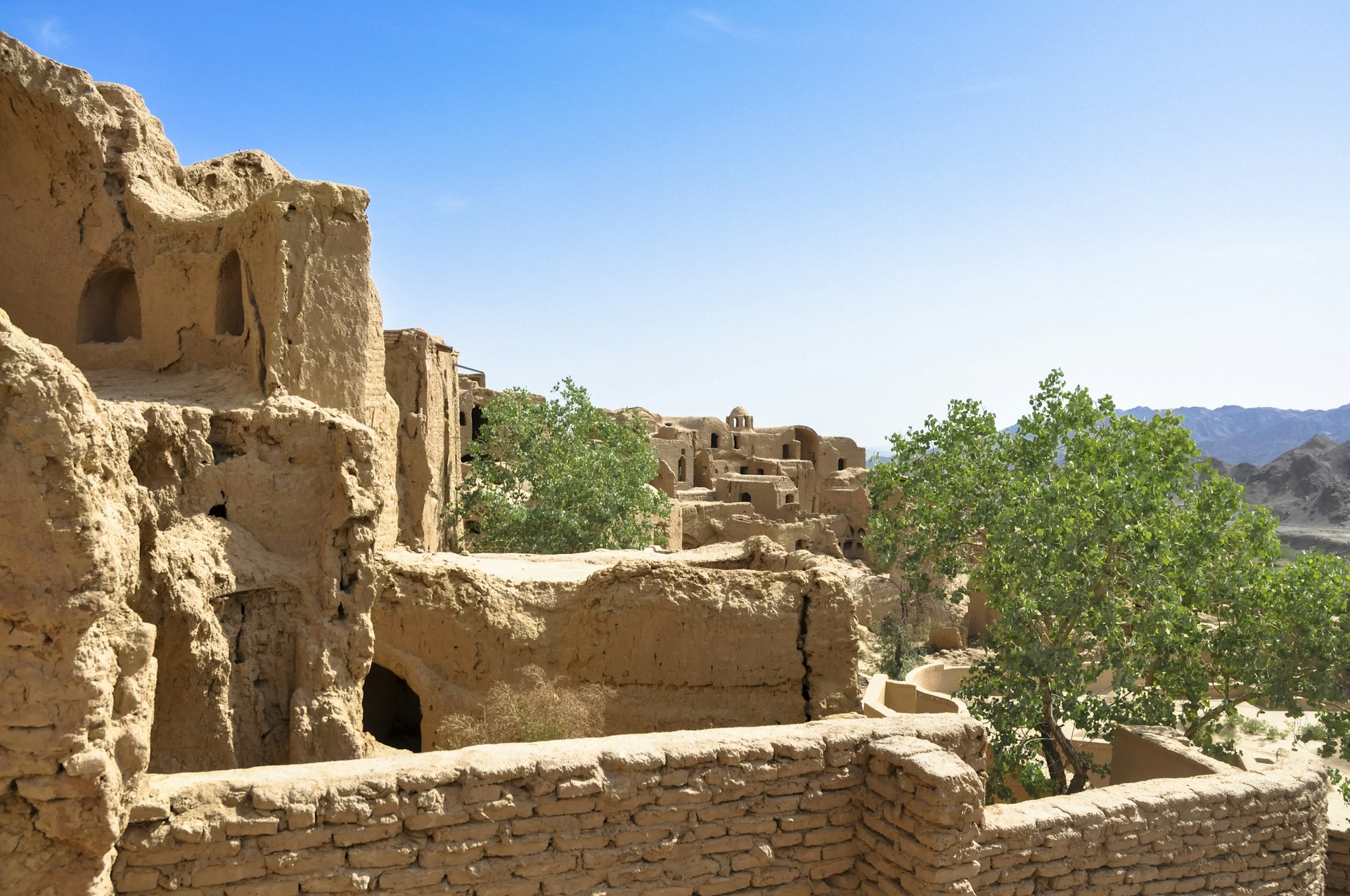
Unearth timeworn Kharanaq
The thousand-year-old crumbling mudbrick village of Kharanaq is as a close as you’ll get to a true Indiana Jones moment. Although advertised as a popular day trip from Yazd, there is little evidence that it’s on the tourism radar once there. Forgotten in time and only an hour’s drive from Yazd, this peaceful deserted town sits serenely within a green valley, its adobe mud rooftops punctuating the skyline like little pottery building blocks. Once within its tall outer walls, the labyrinth of alleys and passageways lead into room upon room, with Escher-esque mud staircases reaching roofs and on occasion seemingly to lead nowhere at all. Wandering and getting lost is half the fun, and exploring here is often a solitary affair that will teasingly make you believe that you’re the first to uncover its secrets.
Explore Castle ruins
Narin Castle sits on what is believed to be a 4000-year-old history of civilisation, and although its past continues to be studied and remains somewhat unknown, it was used as a port of call for those traveling the Silk Road. The decaying ruin appears to have three levels of construction build progressively over its long history, including evidence of a plumbing system. Perched high on a mound above what is now the town of Meybod, the ruins are an impressive example of sophisticated Sassanian design. Not surprisingly, it’s a little crumbly around the edges and is definitely in need of a little love, but the history behind its decaying mud walls is worthy of veneration. The winding path circumnavigating its three levels teases with panoramic glimpses before you reach the top terrace with sweeping views of the low-lying town. Narin Castle’s dilapidated exterior appears as a simple, unremarkable structure, which totally belies the secrets within, and subsequently doesn’t seem to draw the crowds lured by the kaleidoscope colours of Iran’s mosques. It may or may not have been King Solomon’s abode and might have originally been built as a fire temple, but for now however, Narin Castle holds its secrets tightly within its mighty walls.
